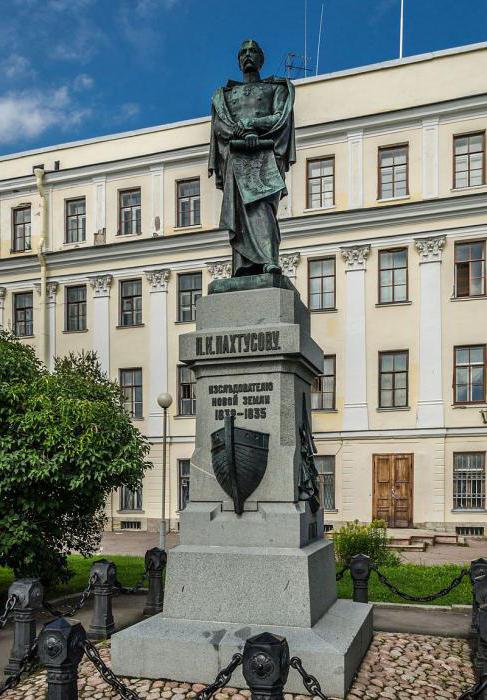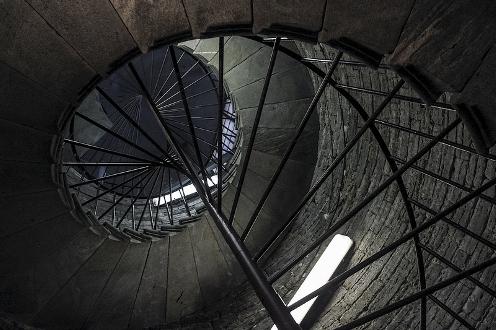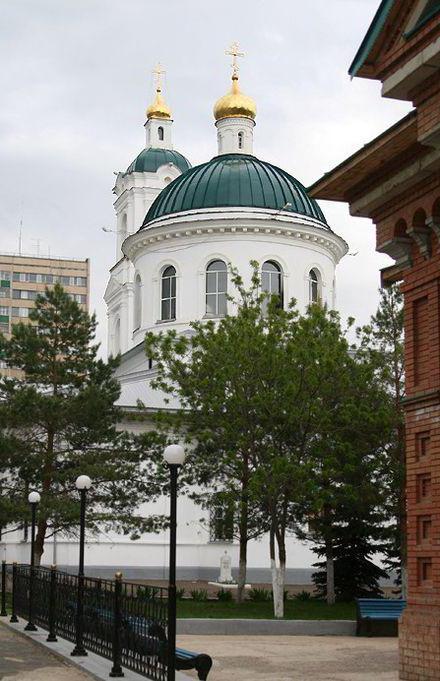Naval Cathedral in Kronstadt: working hours, address, photo
From time immemorial the city of Kronstadt,located on the island of Kotlin in the Gulf of Finland, served as a guard of the north-west of Russia on the Baltic Sea. However, it is famous not only as a military garrison, but also as a repository of many historical values and sights of St. Petersburg associated with sea glory.
One of the most significant and majestic buildingsis the St. Nicholas Naval Cathedral in Kronstadt. It is located in the center of the city and serves not only as a monument to heroism and courage of Russian sailors, but also performs quite peaceful functions: on ordinary and public holidays, divine services, baptisms and weddings are held here.

Naval Cathedral in Kronstadt: address
Russia, St. Petersburg, Kronstadt, Anchor Square, 1.
Operating mode
Kronstadt, the Naval Cathedral, opening hours: daily from 9.30 to 18.00.
Also, if you wish, you can also go to the divine service, which is held twice a day: at 10.00 and at 18.00.
How to get there?
Unfortunately, water routes this year have been canceled because of low profitability, therefore to reach Nikolsky Cathedral it is possible now only by ground transport:
- minibus No. 405 to Kronstadt from the metro station "Chernaya Rechka" to the stop at Yakornaya Square;
- minibus No. 407 to Kronstadt from the Prospekt Prosveshcheniya metro station to the stop at Yakornaya Square;
- Bus number 101 to Kronstadt from the metro station "Staraya Derevnya" to the stop near the House of Life, then - on foot along Sovetskaya Street to the Anchor Square.
Total information
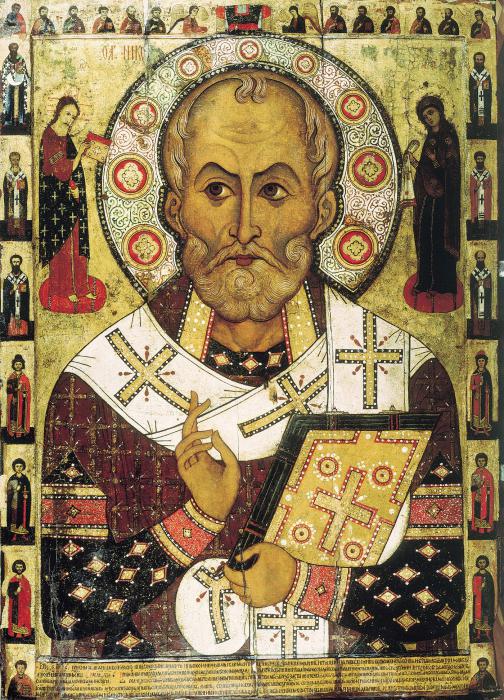
Its appearance is the Nicholas Naval CathedralThe Wonderworker is reminiscent of the Sophia Temple in Istanbul. Its structure is almost identical to the Turkish religious museum, but it is much smaller: the length of the St. Nicholas Cathedral is 83 m, width - 64 m, the height (including the cross) - just over 70 m.
Simultaneously, in the St. Nicholas Church, in its main part, can accommodate about 3 thousand people.
The Naval Cathedral in Kronstadt is the second largest in Russia after the Moscow Cathedral of Christ the Savior.
History
Preconditions for the beginning of the construction of the cathedral of steelappeared at the end of the XIX century, when the island of Kotlin had already acquired the status of lived-in: by that time the port, shipyards, docks, military base had been rebuilt. But there was still no serious church that would symbolize the faith and piety of the Russian army.
Of course, there was an Orthodox church. But she, compared with the nearby Lutheran chapels, was so plain that the main proponent of erecting a new church and a donator, Protopriest John of Kronstadt, constantly blamed the authorities for this. According to him, this was the reason for some of Russia's failures in the naval field. In addition, the majestic church would protect and protect Russia from the encroachments of foreigners, since the temple is equated with the same ship that is ruled by the Lord.
Designing: 1896 - 1902

In 1896, through the efforts of one of the initiators,vice-admiral and port commander in Kronstadt NI Kazakova, work was begun on the design of the future St. Nicholas Cathedral. Coupled with its direct purpose, the temple was also to perpetuate the memory of outstanding naval officers and employees who died in the performance of their duty.
In 1897, an international competition was announced fordesign of the structure, and also appointed a Committee for the collection of donations for construction. The money was also given by members of the royal family, ordinary citizens, and ranks belonging to the Naval Department. By the way, the last in 1898 was obliged to deduct 0.25% of the total salary until 1914.
In total, two competitions were held for the Naval Cathedral in Kronstadt. Their schedule was dated 1897 and 1898, however, at none of the events the winner was chosen and was not.
In July 1899, Nicholas II had already approveda project of AI Tomishko, who had not previously participated in the competitions, but the Committee for Construction opposed this, and as a result, VA Kosyakov was instructed to develop it. A few years earlier, this architect had already built two similar in the subject of the temple.
In 1901, V.A. Kosyakov presented two sketches to the special military assembly, one of which was finally approved by both Nicholas II and the Committee. The future Naval Cathedral (Kronstadt) for this project in many respects repeated the lines of Constantinople St. Sophia.
Bookmark: 1901-1903 years.
The place for the construction of the Naval Cathedral was chosen back in 1898. They became Anchor Square due to their following features:
- this segment was the center of the city;
The place had a certain elevation, and was protected from floods;
- according to the plan, the St. Nicholas Cathedral, located here, could be observed from all points in the fairway;
- An extensive platform in front of the temple would serve as a parade ground for the parade of naval troops;
- the size of the square was just enough for a huge cathedral.
In 1901, after the leadership wasfunds were allocated for the erection of the temple, a prayer service was held at the Anchor Square. The earth itself was consecrated by John of Kronstadt himself. The event was attended by about 14,000 naval officers and cadets. After the celebration, the site was cleared for several months.
1902 was marked by the beginning of construction of the foundation pit and the foundation for the Naval Cathedral in Kronstadt.
In 1903, laid the first wall. It happened on May 8 in the presence of Emperor Nicholas II, his wife Alexandra Feodorovna, mother of Maria Feodorovna and princes Mikhail, Alexei and Vladimir.
Construction and decoration: 1903-1913.
Until the beginning of 1905, the constructionthe work of the Naval Cathedral. In Kronstadt, the process was controlled by the very leadership of the Committee, but even the higher ranks could not influence the suspension of the process, which suddenly arose in 1905-1906 due to internal unrest. It was mainly due to shortcomings of important building materials: metal structures, bricks and ornaments.
In 1907, the construction of the cathedral was resumed, the interior decoration of the premises began. The decor took more time than the building itself.
In 1908, they completed the installation of a heating system.
In 1913 the final stage of finishing was completed: on the walls of the Cathedral of St. Nicholas placed a table with the names of the dead sailors, made of marble. All employees were included in the lists, beginning in 1696.

On June 10, 1913, the Naval Cathedral was consecrated in the presence of the emperor and members of his family. Not only in Kronstadt, but also in St. Petersburg, grandiose festivities took place in honor of this event.
After all the work was completed, we recalculated construction costs. As a result, it turned out that only about 1,876,000 rubles were spent on the Naval Cathedral in Kronstadt.
St. Nicholas Cathedral during the Revolution
Nominal destination of the temple haddo not last long - only 4 years. In 1914, the First World War began, in 1918 the building was redeveloped for civilian needs, and the following year they were all handed over to parishioners for contractual use.
In the summer of 1929 the last service was held in the Naval Cathedral of Kronstadt. After this, all the remaining property of the temple was described and handed over to the State Fund, State Bank, Naval and Russian museums.
Irrevocable loss of steel lists of sailors, gold immortalized on marble tablets. One part of them was broken, the other - used in the installation works.
In 1930, the Bolsheviks were sent for remeltingalmost all the bells and metal instruments that could only be found in the temple. To alert the alarm, only one bell weighing about 5,000 kg was left. There is a version that the workers simply could not take it off. A few months later, crosses were dropped from the top. Now red flags fluttered over the tops of the cathedral domes.
In 1932, the interior of the templeconverted into a cinema, in 1939 they converted again, but already under the House of Officers. The engineering service of the latter made a significant contribution to the preservation of the technical characteristics of the structure. Regular maintenance helped save the temple and communications from dilapidation and utter devastation.
The Great Patriotic War and the postwar period
With the arrival of the fascist troops on the dome of the SeaThe cathedral was equipped with an observation platform. It functioned until the blockade was lifted. Despite all the efforts of the townspeople, during the war several shells fell into the temple, the holes were subsequently removed, and inside the building they made repairs.
After the end of hostilities a new idea arose: arrange a concert hall in the Naval Cathedral. As a result of the capital construction works, a suspended ceiling, a balcony, a stage and wall partitions were installed. The alteration of the premises was carried out until 1954, and its result was a violation of the integrity of the walls of the temple - they were numerous cracks. In February 1955 the hall was inaugurated. Here there were evenings, concerts, various entertainment events. After the reduction of the garrison in the 60's. The hall again became one of the branches of the House of Officers.
Naval Cathedral: from the 70's. to the present day
In 1970, the consciousness of the population changed, and inThe Naval Cathedral of St. Nicholas the Wonderworker decided to carry out major repairs and restoration. The state took the temple under its care, marking it as a cultural monument.
1976 was a new milestone in the history of the Orthodox building. The restoration of the Naval Cathedral in Kronstadt restored its original appearance.
In 1978, a fire broke out in the building of the Kronstadt Sailor Club. In this case, the rooms of the Naval Cathedral again came to the rescue - the club was temporarily placed in the temple.
On May 8, 1980, on the day dedicated to the anniversary of the victory over the German troops, a museum was opened in the St. Nicholas Cathedral, named after the Kronstadt Fortress. Its area was slightly less than 1000 m2, and in the collections there were about 3000 items that have come down to us since the war times.
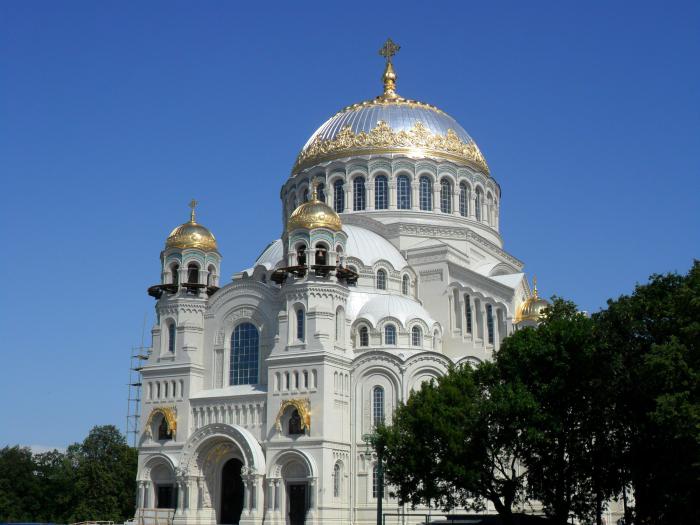
Architecture and decoration of the Naval Cathedral
In the external appearance of the building, elements inRomanesque style. The facade is lined with light brick, columns, portals and arch arches, with the addition of multiple decorative elements and ornaments. Despite the massive and impressive size of the structure, due to the numerous ornaments, it does not create a sense of cumbersomeness.
Portal above the main entrance portal decoratemosaic images of angels and a quote from 112 psalm "From the east of the sun to the west, the name of the Lord is praiseworthy!" There are two belfries with gilt arches and icons on the frontal part.
The main decoration of the Naval Cathedral is,of course, its main dome. Bright, huge, richly decorated with golden anchors, resting on the "drum" from the many end, it creates a truly grand impression.
At the entrance to the St. Nicholas Cathedral, several granite steps lead. The doors are massive, decorated with carvings and images of saints.
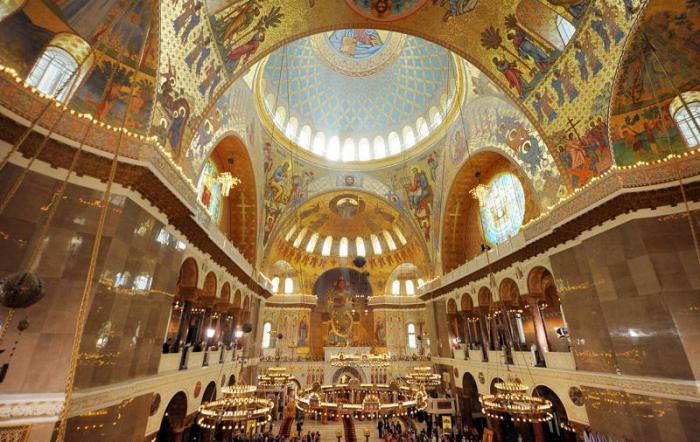
Inside the Naval Cathedral view involuntarilyrises up. The central dome from here seems even broader. Its diameter is 27 meters, and the height from the floor to the topmost is 52 meters. On the sides to it are adjacent two more domes, but already smaller in size. The space is increased by the open galleries on each side.
From the inside, the temple impresses with its true grandeur: The giant space is full of mosaic panels made in Byzantine style. The interior includes numerous images of fish, seaweed, seahorses, ships. The iconostasis and stained glass paintings of 52 square meters each deserve special attention.
You can not ignore the marble black boardswith the names of the dead seamen - everything that could be saved and restored from non-existence. They are located around the perimeter of St. Nicholas Cathedral and are its main feature.
In the prayer house there are three altars,consecrated in honor of Nicholas the Wonderworker himself, as well as Peter and Paul and St. John. They are located in the western portal. The northern and southern parts are decorated with images of the Kazan Mother of God and St. Mitrofaniy respectively. The restoration of the Naval Cathedral in Kronstadt helped bring to our times these images in all their glory and magnificence.
If you admire the artistic beauty of the SeaCathedral in ordinary days can be infinite, then on the dates of Orthodox holidays, it is transformed to the highest degree. Countless strings of candles and lamps make the panel, gilt and stained glass shine and shine, inspiring awe and solemn awe. The effect is enhanced by the splendor of the service conducted and the singing of the church choir on the balcony gallery. There is no more magnificent and monumental in the city of Kronstadt attractions: the Naval Cathedral is a real symbol of the island of Kotlin, a monument to the heroic maritime past of Russia and the keeper of its water northern borders.
Functional of the Naval Cathedral in our days
Today St. Nicholas the Miracle Worker Cathedralin high-grade mode. Work on the capital restoration of its external and internal decoration, as well as the spiritual and patriotic status of the shrine began 15 years ago, when in 2000 the first question arose about the revival of naval traditions and the return of Orthodox monuments to the bosom of the Church.
In 2002, at the top of the temple,a new seven-meter cross was built at Pushkin's Sofia factory. 3 years later, the first Liturgy in honor of John of Kronstadt was performed for so long.
Direct participation in the restoration of the templethe spouse of the President of the Russian Federation DA Medvedev - Svetlana Vladimirovna. In March 2009, in the Sergiev Posad Lavra, with her participation, a meeting of the Council for the Guardianship of the Construction of the Naval Cathedral in Kronstadt was held, where a decision was made to create the charity fund of the same name. In May of the same year, a corresponding non-profit organization was formed and started its activities.
December 2009 was marked by the beginning ofscale reconstruction of the temple in the city of Kronstadt. The Naval Cathedral, whose mode of operation until the completion of construction and decoration did not provide visits to visitors and parishioners, was solemnly consecrated on May 28, 2013 by the Patriarch of Moscow and All Russia Kirill in the presence of numerous representatives of the Russian Orthodox Church, statesmen as well as high officials of the Black Sea, Northern , The Pacific and the Baltic Fleet.
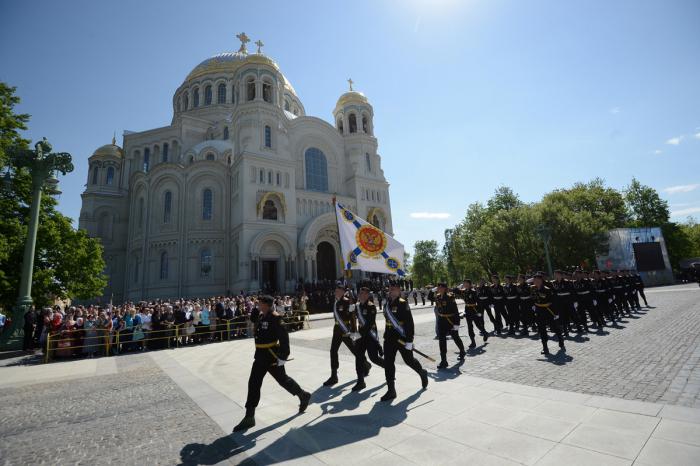
For today, excursions are not the onlyThe reason for visiting the Naval Cathedral in Kronstadt. Baptism of children and adults, wedding, various services - all the same is held in the St. Nicholas Church, as in any other church in Russia.
I want to believe that the tragic history of the monumentfinally over. Now not only Russians from all corners of the country, but also many tourists from far and near abroad strive to get to the island of Kotlin, to see with their own eyes a grand sanctuary in the city of Kronstadt - the Naval Cathedral. His mode of operation, although standard - daily, - however, it is worth remembering that in connection with the final opening on major Orthodox holidays, the church is filled with parishioners completely. In this regard, for a thorough familiarization with the shrine, it is recommended to choose ordinary days.
